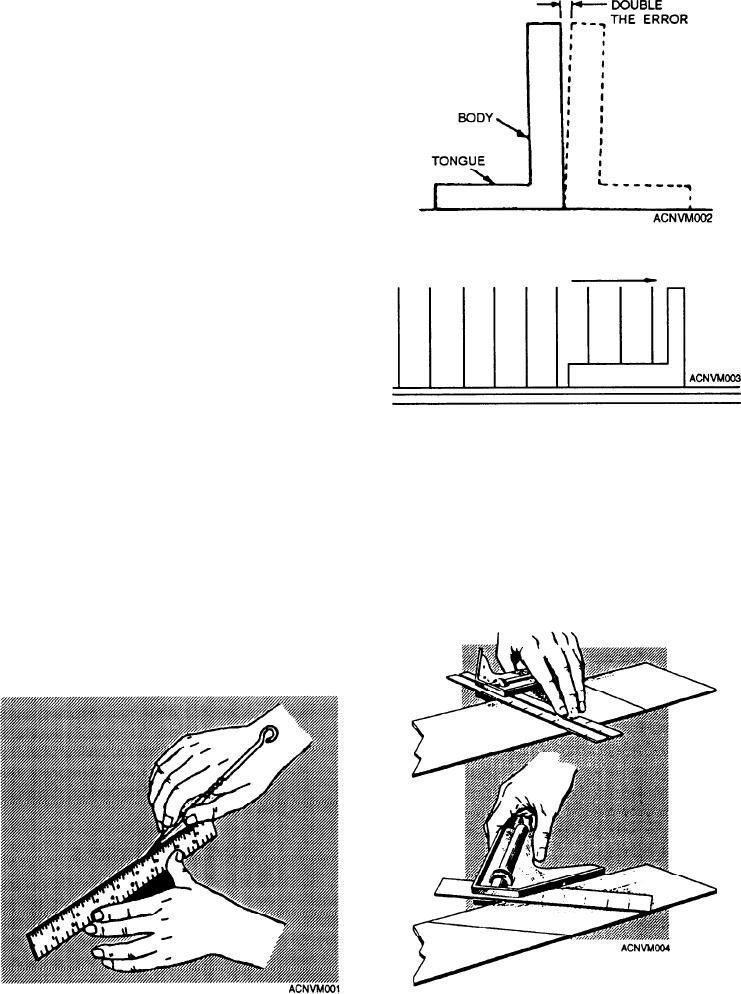
to scribe and divider marks. If this type of paper is not
available, use heavy brown wrapping paper or
discarded chart paper, which you can get from the
navigator or quartermaster. When you use paper,
substitute a 4H pencil for the scribe and a pencil divider
for your regular layout dividers. Take good care of your
scribes, pencils, dividers, and rules because the
accuracy of your work depends upon them. After you
have made a few practice layouts, the importance of
accurate measurements should be clear to you. You will
have a feeling of satisfaction when your layout turns out
as you planned it. If it does not quite fit, you were
Figure 12-2.--Checking the square.
probably careless somewhere in your layout.
Figure 12-1 shows the correct way to scribe a line
on metal using a scratch awl and rule. When you scribe
your line, hold the scale or straightedge firmly in place.
Set the point of the scriber as close to the edge of the
scale as possible by tilting the scriber outward. Exert
pressure on the point and draw the line, tilting the tool
slightly in the direction of movement. For short lines,
use the steel scale as the guide. For longer lines, use a
circumference rule or a straightedge. When you draw a
Figure 12-3.--Drawing perpendicular parellel lines.
line between two points, prick punch each point. Start
from one prick punch mark and scribe toward the center.
To complete the line, start from the other prick punch
is shown in figure 12-3. Just clamp the straightedge
mark and scribe towards the center as before.
firmly to the base line. Slide the body of the square
The FLAT STEEL SQUARE is useful for laying
along the straightedge, and draw perpendicular lines
out sheet metal jobs. Before using it, or at least at
through the desired points.
periodic intervals, check the square for accuracy, as
The COMBINATION SQUARE can be used to
shown in figure 12-2. When your square is off, your
work will be proportionately off, no matter how careful
draw a similar set of lines, as shown in figure 124. Use
you are. In parallel line development, use the flat steel
square to construct lines that are parallel to each other
as well as perpendicular to the baseline. This procedure
Figure 12-1.--Scribing a line.
Figure 12-4.--Using a combination square.
12-2

